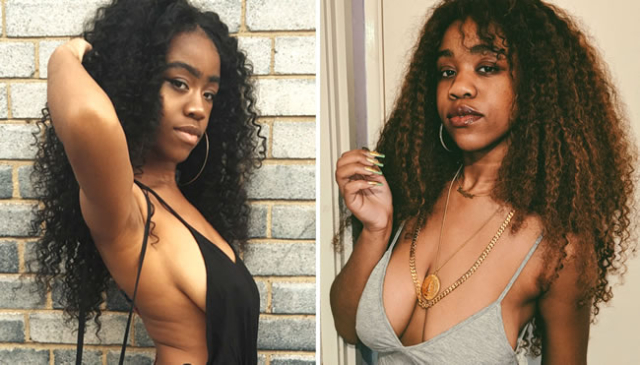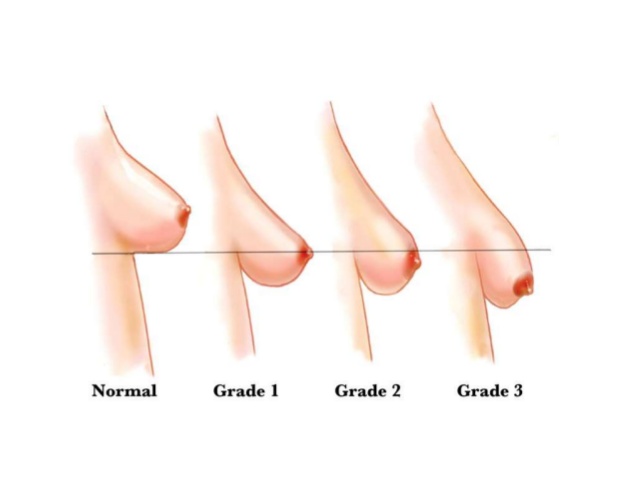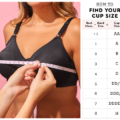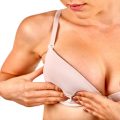Breasts usually start to develop around the age of 9, but it’s normal for them to start earlier or later. Girls usually begin puberty between the ages of 8 and 13 years old. The earliest sign of puberty in most girls is the development of breast “buds,” nickel-sized bumps under the nipple. It is not unusual for breast growth to start on one side before the other. It’s also common for breast buds to be somewhat tender or sore. Uneven breast growth and soreness are both totally normal and usually improve with time.
If a girl’s breasts start to develop at a younger age, this doesn’t mean she’ll have bigger breasts than someone who starts to develop later. The rate at which breasts grow is different for everyone.
How do breasts start to develop?
When breasts start to develop, a small bump called a breast bud grows under the nipple and areola (the darker area of skin around the nipple). The breasts get bigger and rounder as the fatty tissue and milk-producing glands inside the breasts continue to grow. The areola also gets bigger and darker and the nipples may stick out. By the age of 17, a girl’s breasts will usually be fully developed, although this may take a bit longer.
You’ll probably notice that you and your friends grow in different ways. One girl’s breasts may start to develop first, but her friend may get her period earlier. Bodies don’t develop in any set order and everyone’s different.
As the breast buds grow, you may notice tingling, aching, or itching in your chest, and your nipples may swell or become tender. This is all normal. After your periods begin, the changing hormones may make the breasts feel tender, painful, or sore a week or so just before your period starts.
Are my breasts normal?
It’s common to worry about whether your breasts are normal. But normal breasts come in different sizes and shapes and everyone’s breasts are different. Breast size varies widely among individuals, and there is no specific size or shape that is considered “normal.” The size of breasts is influenced by a variety of factors, including genetics, age, weight, and hormonal changes. Breasts can range in size from small and almost flat to very large and full. It is important to remember that every person’s body is unique and there is no single standard for what is considered “normal” when it comes to breast size or shape. What matters most is that you feel comfortable and confident in your own body.
Can I change the way my breasts develop?
There’s nothing you can do to speed up or slow down breast development. The development of breasts is largely influenced by genetics and hormonal changes, which can vary from person to person. While there are no guaranteed ways to change the way your breasts develop, there are some factors that may influence breast growth or appearance.
Factors that may affect breast development include:
- Hormonal changes: Hormonal changes during puberty, the menstrual cycle, pregnancy, and menopause can all affect breast development.
- Nutrition: Eating a healthy and balanced diet can help support overall health, which may impact breast development.
- Exercise: Regular exercise can help improve overall health, which may have a positive impact on breast development.
- Weight changes: Gaining or losing weight can affect breast size and shape.
It is important to remember that breast development is a natural process and that there is no one “correct” way for breasts to develop. If you are concerned about the development of your breasts, it is recommended that you speak with a healthcare professional for guidance and advice.
What is breasts sagging?
Breast sagging, also known as breast ptosis, is a condition where the breasts lose their firmness and shape and begin to droop downwards. This is a natural process that occurs as women age and their skin loses elasticity, but it can also be caused by a variety of other factors, including genetics, weight fluctuations, pregnancy and breastfeeding, and smoking.
Breasts are composed of milk-producing glands, connective tissue, and fat. The breast tissue is supported by ligaments and skin that help to maintain its shape and position. As women age, their skin and the ligaments that support the breasts lose their elasticity, causing the breasts to sag.
The degree of breast sagging can be classified into three categories: mild, moderate, and severe. In mild cases of breast sagging, the nipples are at or slightly below the level of the breast crease, and the majority of breast tissue is still above the crease. In moderate cases of breast sagging, the nipples are located below the level of the breast crease, and a significant portion of breast tissue is below the crease. In severe cases of breast sagging, the nipples point downwards and a majority of breast tissue is located below the breast crease.
How can you classify what stage of sagging your breasts are at?
Here is a clear illustration of the stages of breast sagging to help you understand the issue better.
Grade I: Mild Ptosis
You have mild breast sagging if your nipples fall right at the level of the inframammary fold (the crease beneath the breasts). With mild breast sagging, most of the lower breast tissue still hangs beneath the nipples.
Grade II: Moderate Ptosis
You have moderate breast sagging if your nipples rest just below the inframammary fold. Most of the breast tissue still hangs below the nipples, but there is noticeable sagging.
Grade III: Advanced or Severe Ptosis
You have advanced or severe ptosis if your nipples rest below the inframammary fold and the bulk of your breast tissue. The nipples are at the level of maximum breast projection and are pointing downward.
Why Do My Breasts Sag At A Young Age?
There are several reasons why the breast of a young girl may sag but there are a lot of misconceptions about the causes and how to deal with them. While the sagging of teenage breasts is infrequent, some teenage girls, especially those who have large breasts or exercise frequently, might notice more sagging. Some possible reasons for breast sagging in young women include:
- Genetics: Genetics plays a significant role in determining breast size and shape, as well as skin elasticity. If your mother or grandmother had sagging breasts at a young age, you may be more likely to experience the same.
- Weight fluctuations: Rapid weight loss or gain can cause the breast tissue to stretch and sag. This can be particularly true for young women who experience fluctuations due to pregnancy, breastfeeding, or changes in diet and exercise habits.
- Poor posture: Poor posture can cause the muscles and ligaments that support the breasts to weaken, leading to sagging.
- Hormonal changes: Hormonal changes, such as those that occur during puberty, menstruation, pregnancy, and menopause, can also affect breast tissue and cause sagging.
- Smoking: Smoking can lead to premature aging and loss of skin elasticity, which can cause breasts to sag.
Preventing the worsening of sagging breasts is much easier than treating it. If you notice your breasts are beginning to sag prematurely, don’t panic because several options are available to you.
How to Avoid Having Sagging Breasts As A Young Woman
- Wear a supportive brassiere
Wear a supportive brassiere (bra). The way to look your best and protect the tissue of your breasts is to wear a bra that fits properly.
Have yourself properly fitted. Many women do not wear the correct bra, and they end up with something that doesn’t do its job.
Look for a quality store that specializes in bras and foundation items. This can be a department store, specialty shop, or foundation store. These stores employ staff who are knowledgeable and stock a wide selection of BRANDS of quality products and bras for harder-to-fit women.
Consult with a professional bra fitter and have your body properly measured. Many quality lingerie stores and department stores offer this service for free.
Feeling shy? That’s normal. Bring a female friend, a relative, or your mother. It’s always nice to have someone at your side!
- Select the correct bra for your needs.
Choose a bra with a wide back strap. The wider the back strap the more support you get in front. This may include bras with 3-6 hooks. You may like the look of a lacy bra with a one-hook closure in the back, but it won’t support larger breasts. Fortunately, colorful, lacy, cute, and/or sexy supportive bras can now be found in even the largest sizes.
Choose a bra designed to support large breasts. Many companies make structured bras designed to hold larger breasts firmly and comfortably.
Wear a supportive sports bra. This is particularly important in sports that have a lot of movement and bouncing, like running, soccer (football), and rugby. Larger-breasted women may need to shop for specialty sportswear online or in catalogs. Though it might be tempting, do not double up with sports bras. There are better options available even for the largest-breasted women.
- Make sure you are wearing your bra correctly
Put on your bra correctly. Take the proper amount of time to get dressed and be sure your straps are adjusted to your back. Straps tend to move around and get twisted during laundering. Hand wash your bras whenever possible. Allowing them to air dry, rather than putting them in the dryer, will make them last longer. Be sure and shape the cups as they are drying.
Lean forward when putting on your bra to ensure your chest is centered and perky. Also, make sure the middle of the bra is centered with your body. Look for the mid-point on your arm and your nipple line should be on the same level as that middle area of your arm. If it is too low, you aren’t getting enough support.
- Avoid health-related problems with breasts
The absolute best thing you can do to reduce the potential problems of sagging and fibro cystic lumps is to self-massage your breasts at least 3 to 5 times a week. This does two wonderful things: It releases stagnated fluids in the breasts for optimal breast health. It also can result in re-shaping and lifting them. Use a natural, organic breast massage oil, made just for breasts, for an enjoyable and deeply relaxing self-breast massage.
Consult your physician. He or she might have some ideas that can help or reassure you that your body is perfectly normal.
Your healthcare specialist may suggest a weight loss plan. It is common for women to gain weight in their chests. Don’t be offended if your doctor puts you on a diet–you can’t escape your genetic code. Your body may store fatty cells in your breast tissue, whereas other women store it in their hips, thighs, and abdomen.
Avoid yo-yo dieting. If you are constantly changing cup sizes, the repeating weight gain and loss will inevitably stretch your breast tissue. Report persistent back pain. You may need supplemental back support or a prescribed custom bra for your needs.
- Do not go braless
Avoid going braless. Gravity will inevitably cause your breasts to sag. Going without a bra for extended periods of time will further stretch the breast tissue. Do not wear your bra for more than 12 hours a day. Studies have shown that wearing a bra more than 12 hours a day may increase breast cancer risk. The extended wearing of tight bras “cages” toxins within the breast tissue by preventing the natural flow of the lymphatic fluids, which are designed to cleanse these toxins out of the tissues.







